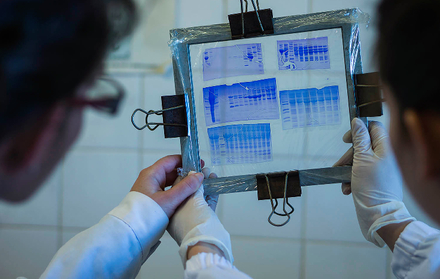Analysis of the Discontinuous Petrov-Galerkin (DPG) Fe Method In Multidimensions, Leszek Demkowicz (Institute for Computational Engineering and Sciences (ICES) , University of Texas at Austin), leszek@ices.utexas.edu (joint work with Jay Golapalakrishnan, U. Florida).
Over a year ago, Jay Gopalakrishnan and I introduced a new DPG Method with Optimal Test Functions that allows for constructing discretization schemes for virtually arbitrary systems of linear PDE's. The method guarantees automatically the discrete stability provided the continuous problem is well posed (inf-sup condition satisfied). In particular, it applies to arbitrary adaptive FE meshes with varying element size h and polynomial order p, extending thus dramatically the applicability of hp approximations to challenging singular perturbation problems.
The DPG method builds on two fundamental ideas:
- a Petrov-Galerkin method with optimal test functions,
- a discontinuous Petrov-Galerkin formulation based on the so-called ultra-weak variational hybrid formulation.
After a short review of the method using convection-dominated diffusion as a model problem, I will present our first multidimensional analysis result for Poisson and convection-dominated diffusion problems [8].
The presented methodology incorporates the following features:
The problem of interest is formulated as a system of first order PDE's in the distributional (weak) form, i.e. all derivatives are moved to test functions. We use the DG setting, i.e. the integration by parts is done over individual elements.
As a consequence, the unknowns include not only field variables within elements but also fluxes on interelement boundaries. We do not use the concept of a numerical flux but, instead, treat the fluxes as independent, additional unknowns (a hybrid method).
For each trial function corresponding to either field or flux variable, we determine a corresponding optimal test function by solving an auxiliary local problem on one element.
The use of optimal test functions guarantees attaining the supremum in the famous inf-sup condition from Babuska-Brezzi theory.
The resulting stiffness matrix is always hermitian and positive-definite. In fact, the method can be interpreted as a least-squares applied to a preconditioned version of the problem. By selecting right norms for test functions, we can obtain stability properties uniform not only with respect to discretization parameters but also with respect to the perturbation parameter (diffusion constant, Reynolds number, beam or shell thickness, wave number). In other words, the resulting discretization is robust.
For a detailed presentation on the subject, see [1-8].
[1] L. Demkowicz and J. Gopalakrishnan. A Class of Discontinuous Petrov-Galerkin Methods. Part I: The Transport Equation. Comput. Methods Appl. Mech. Engrg., in print. see also ICES Report 2009-12.
[2] L. Demkowicz and J. Gopalakrishnan. A Class of Discontinuous Petrov-Galerkin Methods. Part II: Optimal Test Functions. Numer. Mth. Partt. D.E., accepted, ICES Report 2009-16.
[3] L. Demkowicz, J. Gopalakrishnan and A. Niemi. A Class of Discontinuous Petrov-Galerkin Methods. Part III: Adaptivity. ICES Report 2010-1, submitted to ApNumMath.
[4] A. Niemi, J. Bramwell and L. Demkowicz, ``Discontinuous Petrov-Galerkin Method with Optimal Test Functions for Thin-Body Problems in Solid Mechanics'', ICES Report 2010-13, submitted to CMAME.
[5] J. Zitelli, I. Muga, L, Demkowicz, J. Gopalakrishnan, D. Pardo and V. Calo, ``A class of discontinuous Petrov-Galerkin methods. IV: Wave propagation problems, ICES Report 2010-17, submitted to J.Comp. Phys.
[6] J. Bramwell, L. Demkowicz and W. Qiu, ``Solution of Dual-Mixed Elasticity Equations Using AFW Element and DPG. A Comparison'' ICES Report 2010-23.
[7] J. Chan, L. Demkowicz, R. Moser and N Roberts, ``A class of Discontinuous Petrov-Galerkin methods. Part V: Solution of 1D Burgers and Navier--Stokes Equations'' ICES Report 2010-25.
[8] L Demkowicz and J. Gopalakrishnan, ``Analysis of the DPG Method'', ICES Report, in preparation.
























